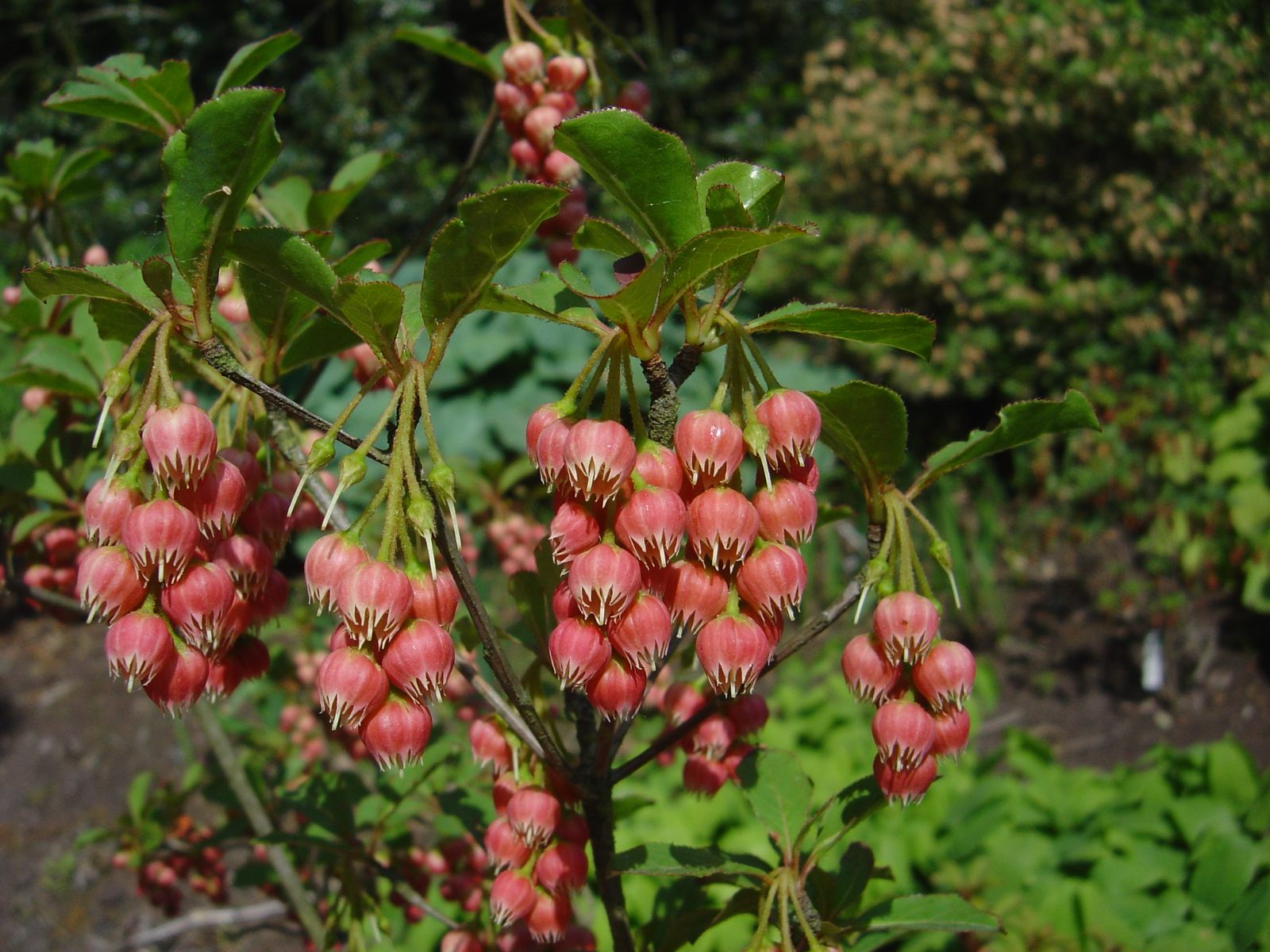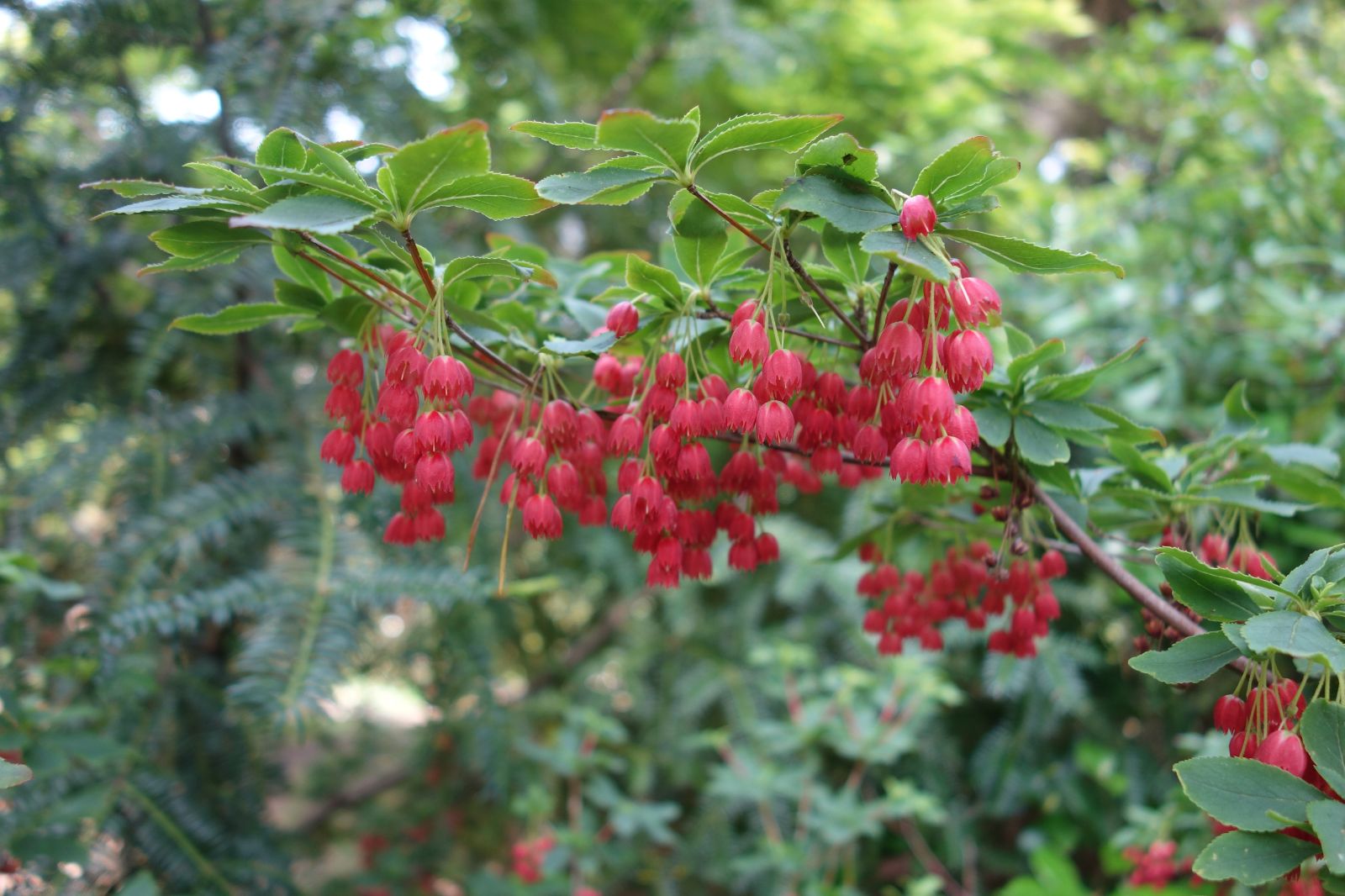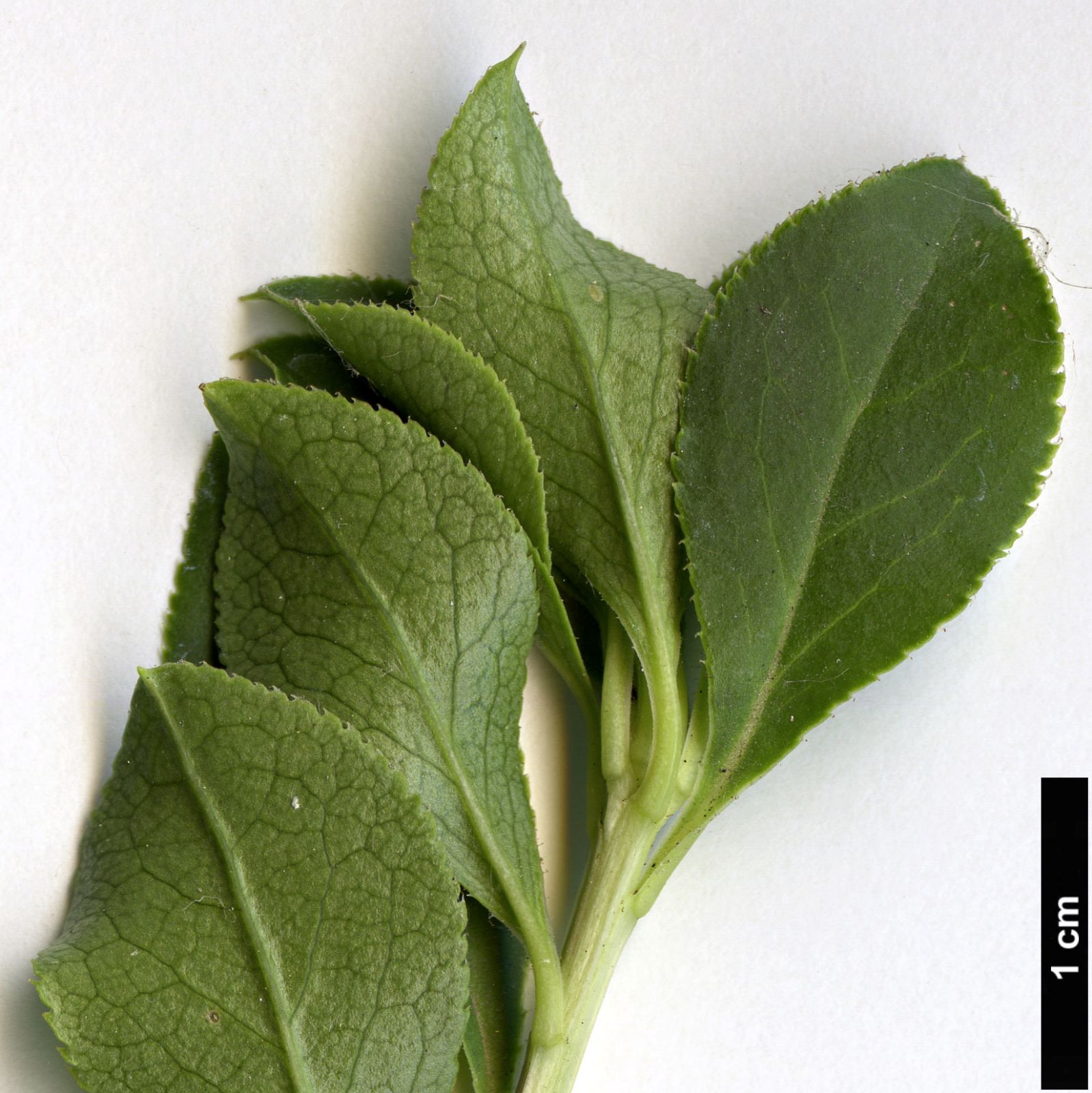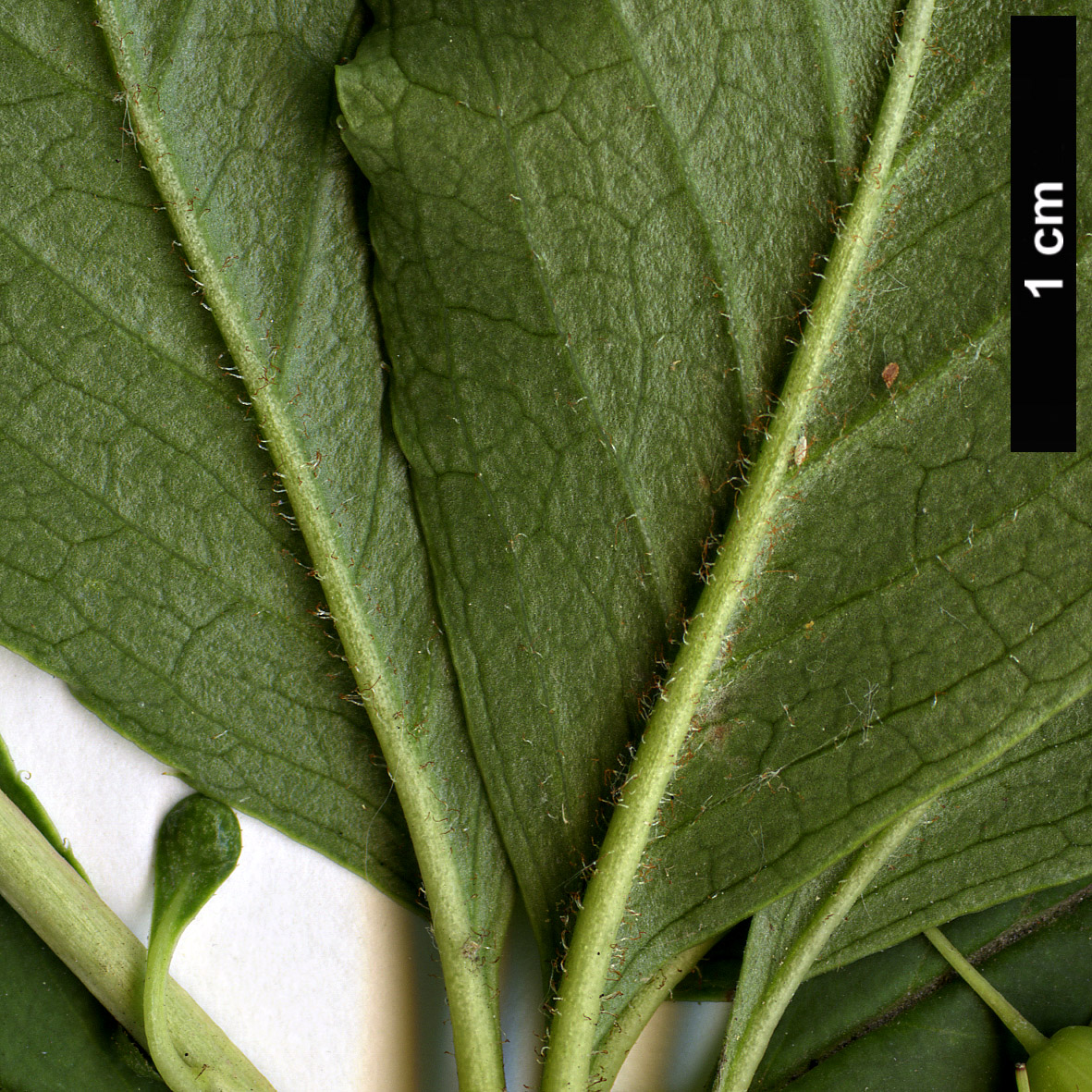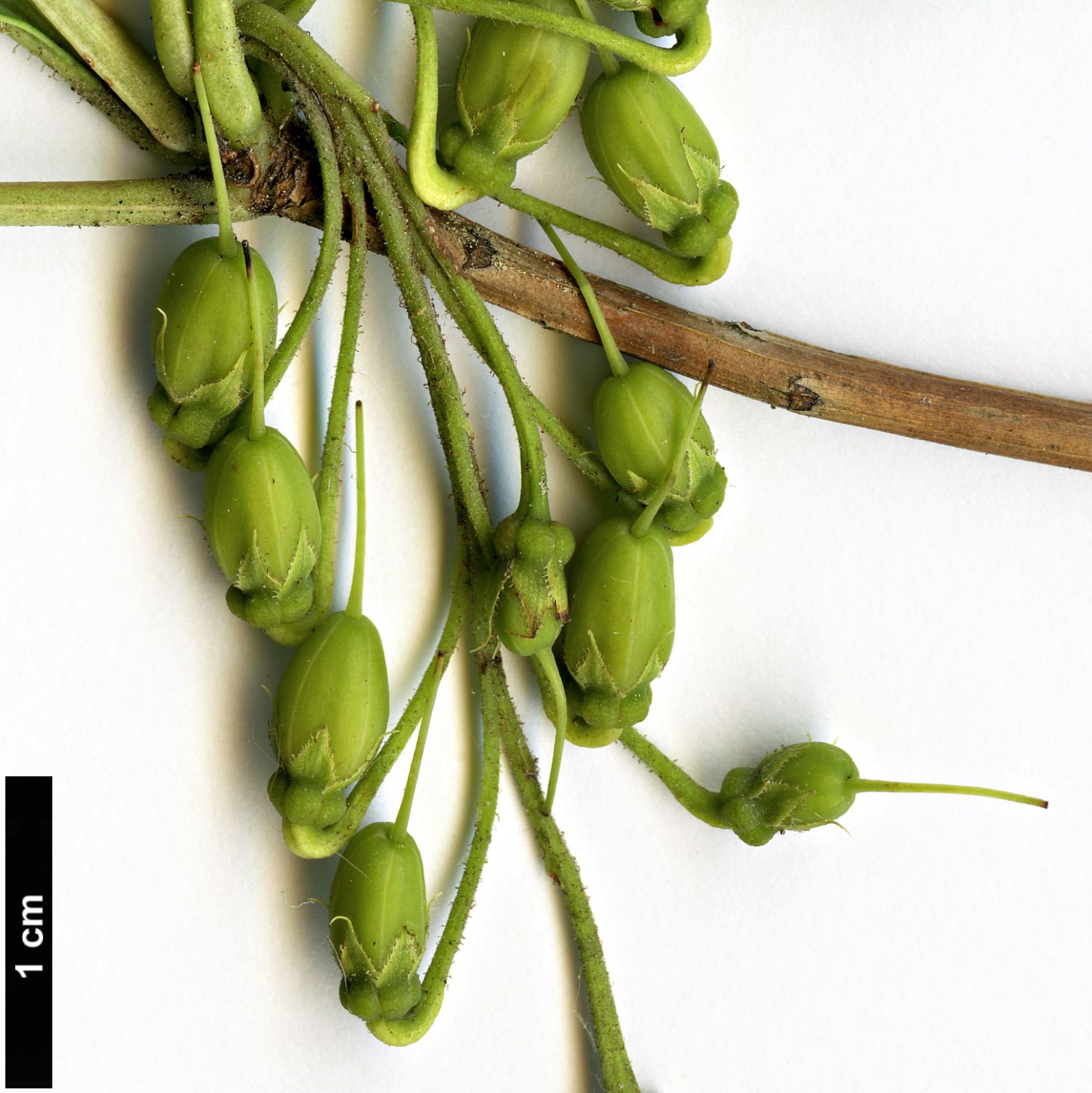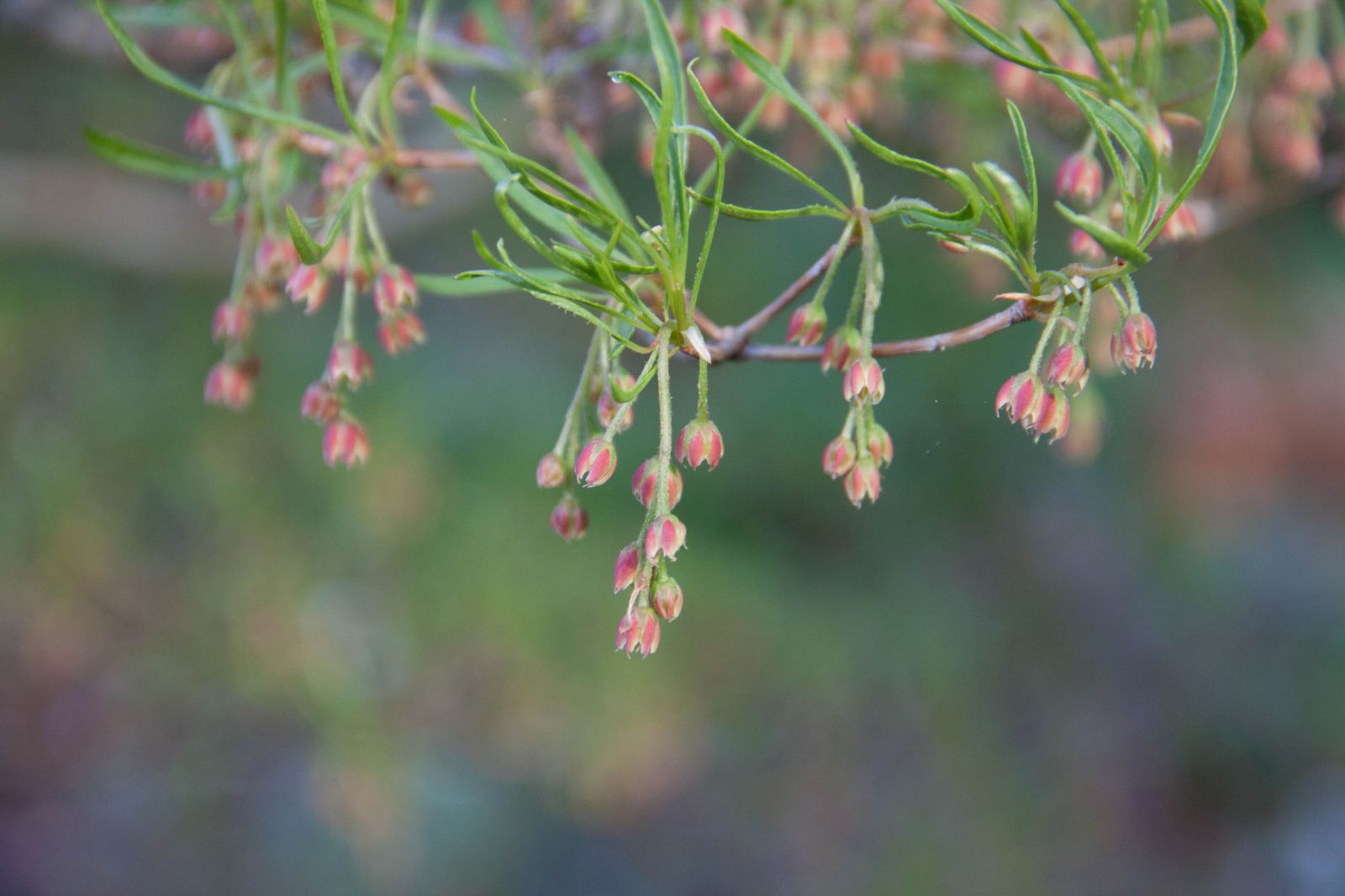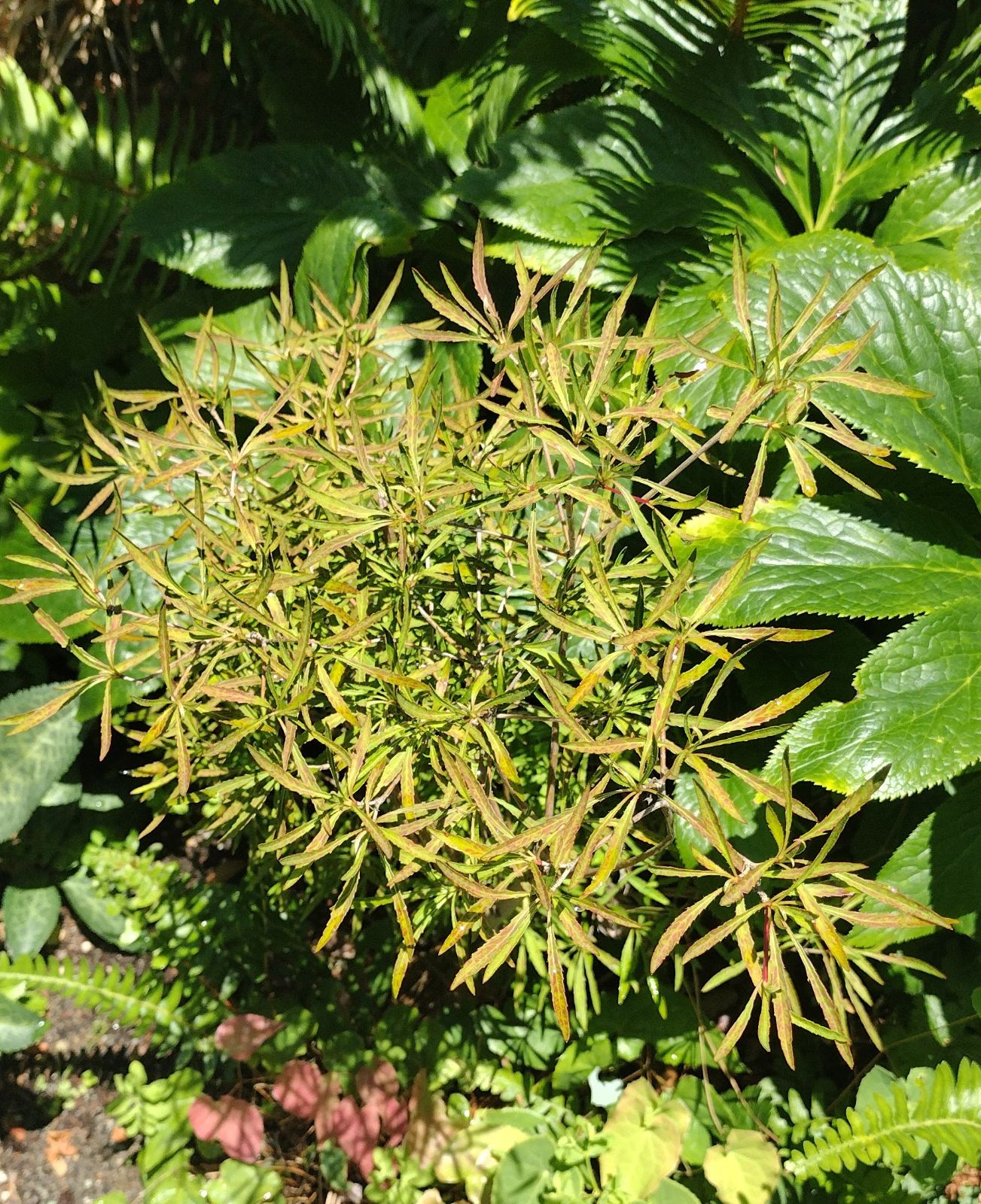Enkianthus cernuus
Sponsor
Kindly sponsored by
Alasdair and Panny Laing
Credits
Tom Clark (2023)
Recommended citation
Clark, T. (2023), 'Enkianthus cernuus' from the website Trees and Shrubs Online (treesandshrubsonline.
Genus
- Enkianthus
- Section Meisteria
Common Names
- Nodding Enkianthus
- Shiro-dōdan
Synonyms
- Andromeda cernua (Siebold & Zucc.) Miq.
- Enkianthus meisteria Maxim.
- Meisteria cernua Siebold & Zucc.
- Tritomodon cernuus (Siebold & Zucc.) Honda
- Enkianthus nipponicus Palib.
- Tritomodon japonicus Turcz.
Deciduous shrub 1–3 m tall. Branchlets terete, striate, glabrous. Leaves 4–6, crowded at apex of branchlets, membranaceous; petiole 2–4 mm long, glabrous; blade obovate, 1.5–3 × 0.7–1.5 cm, apex obtuse or short acute and terminating into a gland, base gradually narrowed, acuminate-serrulate, glabrous or sparsely pubescent on both surfaces, with dense brown crisped lanate hairs on lower part of nerves on lower surface. Inflorescences terminal, racemose, pendulous, 3–5 cm long, 5–12-flowered. Peduncle and pedicels crisped pubescent. Pedicel 3–8 mm long, straight at flowering, upcurved at fruiting. Bracts absent. Calyx broadly campanulate, 2–3 mm long, glabrous or sparsely pilose, deeply 5-lobed; lobes lanceolate, acuminate, pilose on margin. Corolla campanulate, greenish white, 5–7 mm long, glabrous, shallowly 5-lobed; lobes laciniate. Stamens 10; filaments and anthers short pilose; anthers with 2 awns on upper dorsal side. Capsule erect, ellipsoid, 4–5 × 3 mm, 5-ridged. Seeds oblong, irregularly winged, c. 2.5 mm long. Flowers mid May to late June. (Iwatsuki 1993; Ohwi 1965).
Distribution Japan Kyushu, Shikoku
Habitat Somewhat rocky places in deciduous forests; 800–1500 m asl.
USDA Hardiness Zone 5-7
RHS Hardiness Rating H5
Conservation status Not evaluated (NE)
A deciduous shrub perhaps to 4 m tall bearing white, campanulate flowers occurring in nodding racemes of 5–12 flowers. The corolla lobes of this species are unique in the genus in being prettily laciniate due to the very fine but irregular teeth (Iwatsuki 1993). Although this is the type form (f. cernuus) and a delightful shrub, it is only rarely encountered in cultivation or commerce. E. cernuus is, however, widely cultivated in the red-flowered form, f. rubens (see below).
f. rubens (Maxim.) Ohwi
Common Names
Beni-dōdan
Chichibu-dōdan
Synonyms
Enkianthus cernuus var. matsudae (Komatsu) Makino
Enkianthus matsudae Komatsu
Meisteria matsudae (Komatsu) Nakai
Tritomodon matsudae (Komatsu) Maek.
This form differs from f. cernuus in having corollas that are red throughout.
Distribution
- Japan – central to western Honshu (southward from Saitama Pref.), Kyushu, Shikoku
Awards
FCC, AGM
RHS Hardiness Rating: H5
USDA Hardiness Zone: 5-7
Taxonomic note Some authorities continue to recognise E. cernuus var. matsudae (Komatsu) Makino. We follow Plants of the World Online in treating it as a synonym of f. rubens.
This very distinct and beautiful shrub is widely grown and with good reasons. It is reasonably compact and of slightly smaller stature than the typical form, but it is the rich red flowers that establish it as one of the beauties of the genus. Fringed at the mouth – as in the typical form – the flowers have a subtle elegance displayed against the freshly emerged foliage in mid-spring. The flowers have a globose appearance due to their being widest close to the middle, an effect further accentuated by the inward curving lobes of the corolla.
It can be found in cultivation throughout northern and western Europe as well as in North America. Most frequently represented in botanic gardens and arboreta as material of cultivated origin, several wild collections have been made in recent years to diversify the cultivated gene pool of this very choice and desirable shrub. The living collection of Sonoma Botanical Garden in California includes seven separate accessions derived from wild-collected seed received during the past two decades. Seed from Kyoto University accounts for several of these accessions and a 2007 multi-insitution expedition contributed another under collection number BCJMMT 294. The Polly Hill Arboretum (Massachusetts, USA) participated in this same 2007 trip and a single plant of BCJMMT 294 is growing well in a part of that arboretum called Polly’s Play Pen. Another expedition in 2018 yielded seed of this taxa under collection number PCC2018-HON-049 from which plants are growing at Polly Hill Arboretum and the Arnold Arboretum. The University of Pennsylvania’s Morris Arboretum has a 2015 wild-sourced accession from Kyoto University.
This taxon has good cold tolerance as evidenced by its cultivation in several Scandinavian gardens and Coastal Maine Botanical Garden (Boothbay, Maine, USA). That being said, f. rubens is reported to be less hardy than the species, and most of the other species in the genus, in central Belgium. Cold winters there have killed young plants of this form and left older plants with major stem damage from frost; it therefore requires a protected site in such climates (Clark, Hsu & Camelbeke 2011).
f. rubens 'Odoriko'
‘Odoriko’ is a rich, rosy-red flowered selection which was apparently introduced to Europe from Japan by the French nursery Pépinière des Avettes (Pépinière des Avettes 2022). Unfortunately, that nursery’s website erroneously lists this a clone of E. perulatus which it is clearly not; the colour and shape of the flowers together with the fringed nature of the corolla lobes evident in the image are indicative of E. cernuus f. rubens (pers. obs.).
f. rubens 'Willowleaf'
A narrow-leaved selection, purchased from Japan by Dan Hinkley in c. 1989–90 (pers. comm. 2023) and still in cultivation at Heronswood. It is probably the same clone as one formerly grown at the JC Raulston Arboretum as ‘Yanagi-ba’ (image here). The correct nomenclature needs resolution.
f. rubens 'Yanagiba'
This cultivar has small spherical flowers that are deep red. However, it is the narrow leaves giving a feathery effect that make ‘Yanagiba’ one of the most distinctive Enkianthus; at first glance it has the appearance of a cut-leaf Japanese maple. Selected and named in Japan, it was introduced to North America by Brian Upchurch of Highland Creek Nursery (North Carolina, USA) and Ted Stephens of Nurseries Caroliniana (South Carolina, USA) (Clark, Hsu & Camelbeke 2011).

